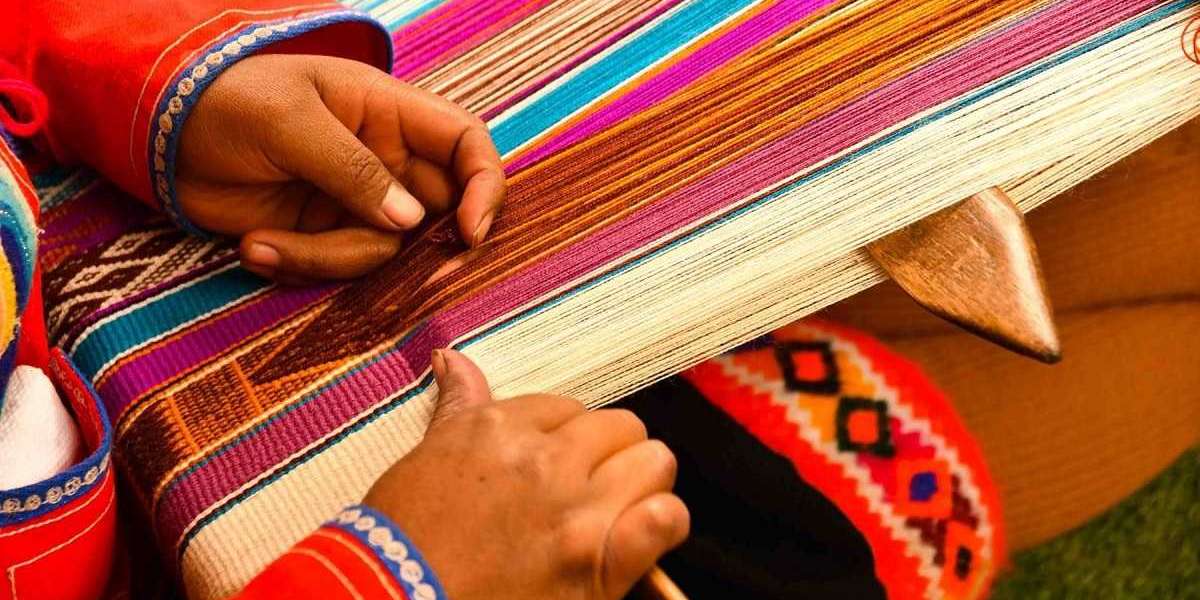In an age where convenience and speed often outweigh quality and meaning, handmade textiles offer a refreshing return to tradition, authenticity, and slow living. These beautiful creations—woven, embroidered, dyed, or stitched by hand—represent far more than decorative fabric. They are the embodiment of centuries-old techniques, stories, and culture passed down through generations.
What Are Handmade Textiles?
Handmade textiles are fabrics crafted using manual techniques such as hand weaving, hand embroidery, block printing, natural dyeing, or traditional knitting and crocheting. Each piece is made without—or with minimal—mechanical intervention, relying on the artisan's skills and cultural knowledge to bring designs to life.
Types of handmade textiles include:
- Handwoven fabrics from looms
- Naturally dyed cottons and silks
- Embroidered linens and garments
- Hand-knitted blankets and throws
- Block-printed home decor and fashion accessories
These items often showcase unique variations in color, pattern, and texture, making each one truly individual.
Why Handmade Textiles Matter Today
? 1. Sustainability in Every Stitch
Unlike mass-produced fabrics made with synthetic fibers and toxic dyes, handmade textiles typically use natural materials such as organic cotton, wool, silk, hemp, and jute. Many artisans also use plant-based dyes and traditional low-energy techniques , resulting in a reduced carbon footprint.
The slow, human-scale process also means less industrial waste and more mindful consumption. In a time of climate urgency, handmade textiles offer a sustainable alternative that is as responsible as it is beautiful.
? 2. Preserving Cultural Heritage
Handmade textile techniques are often tied to regional and cultural identities. For example:
- Ikats from Indonesia and India
- Mudcloth from West Africa
- Backstrap weaving from Guatemala
- Suzani embroidery from Central Asia
By purchasing handmade textiles, consumers help preserve endangered traditional practices and support communities that rely on these crafts as both a cultural identity and livelihood.
? 3. Supporting Artisan Economies
Handmade textiles are often created by artisans in small communities, cooperatives, or family workshops. By choosing to buy from ethical sources, you help create fair-wage opportunities and foster economic independence in artisan communities—especially for women and marginalized groups.
? 4. Unique, One-of-a-Kind Beauty
Mass-produced fabrics often lack soul. Handmade textiles, on the other hand, carry the unique signature of their makers. Each stitch, knot, or dye line is the result of skill and intention. No two items are exactly alike, giving you a piece of art to wear, display, or decorate with.
Popular Uses for Handmade Textiles
? ️ 1. Home Decor
Handmade cushion covers, table linens, bedspreads, and curtains bring texture, warmth, and authenticity into your home. A handwoven rug can become a room's centerpiece, while embroidered throws add cozy layers.
? 2. Fashion and Accessories
Hand-dyed scarves, embroidered jackets, and handmade handbags are not only stylish but also meaningful. These fashion pieces serve as both functional items and storytelling tools, reflecting heritage and handwork.
? 3. Gifts and Keepsakes
Because of their uniqueness and cultural value, handmade textiles make memorable gifts. From heirloom-quality quilts to artisan-crafted tapestries, these items carry a personal and lasting touch.
How to Style Handmade Textiles in a Modern Home
- Contrast with minimalism: Pair handmade fabrics with clean lines and neutral palettes to let the patterns and textures shine.
- Mix textiles: Combine materials like silk, wool, and cotton for layered visual interest.
- Highlight craftsmanship: Display embroidered or printed textiles as framed art or wall hangings.
- Stay intentional: Choose textiles with purpose—each piece should reflect your style, values, or storytelling theme.
Caring for Handmade Textiles
Because handmade textiles are delicate and often made with natural materials, they require mindful care:
- Avoid harsh chemicals. Use natural or mild detergents.
- Hand wash or dry clean. Especially for silks, wools, and natural dyes.
- Store with ventilation. Avoid plastic and opt for cotton bags or open shelves.
- Keep away from direct sunlight. Natural dyes may fade with prolonged exposure.
With proper care, these fabrics can last for generations and even become cherished heirlooms.
Where to Find Handmade Textiles
If you're looking to invest in authentic handmade pieces, consider sourcing from:
- Local artisan markets and fairs
- Cultural and heritage stores
- Online platforms like Etsy, Ten Thousand Villages, or The Citizenry
- NGOs and fair-trade cooperatives that ensure artisans receive a fair wage
Always verify the ethical standards of the seller to ensure you are supporting artisans directly and responsibly.
Final Thoughts
Handmade textiles are more than just beautiful objects — they represent a bridge between past and present, between craftsmanship and culture. In every stitch lies a story of heritage, skill, sustainability, and human connection.








